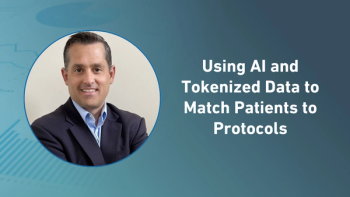
Assessing Suicide Risk in Clinical Trials: The Patient Knows Best
During clinical trials of pharmaceutical treatments, sponsors and CROs need to detect possible suicidal ideation and behavior related to their drug during baseline assessments, and throughout treatment as well as during the follow up phases.
During clinical trials of pharmaceutical treatments, sponsors and CROs need to detect possible suicidal ideation and behavior (SIB) related to their drug.1 Due to the potential risk for new treatments to induce SIB, reliable and timely assessment is critical. It is equally important to identify patients who may be at risk for SIB prior to administering any treatment or drug to prevent exacerbating a pre-existing condition once treatment is initiated.
To protect research participants, SIB should be assessed at patient screening, during baseline assessments, and throughout the treatment as well as during the follow up phases of the study.
In this article, we discuss why and when SIB should be monitored, compare the different approaches to assessing SIB, and present information supporting patient self-reported assessments as the preferred approach for detecting and monitoring SIB.
Impact on clinical development
SIB monitoring provides scientific data of patients’ suicidal ideations and behaviors that occur during a clinical trial, giving sponsors solid evidence to evaluate risks associated with an investigational treatment. In addition to saving patient lives, this information also supports faster go/no-go decisions during development.2
If reliable SIB data are collected during clinical trials, the data can be used to:
- Appropriately screen in/out patients (especially those already demonstrating SIB)
- Measure the severity and significance of any observed suicidal behaviors and/or ideations
- Assess whether a drug has an impact on suicide risk
Assessing for SIB on a regular basis enables the sponsor to conduct a development program with confidence that patient safety is maintained and regulatory expectations are met.
Drug trials requiring SIB testing
Global regulators require SIB assessments for trials with therapies that cross the blood-brain barrier 1as well as making recommendations for clinical investigations of drugs in specific therapeutic indications.1,3-8
According to the FDA 1, prospective SIB assessments should be carried out in the majority of clinical trials that involve the development of a drug for any type of psychiatric indication. The FDA specifically recommends including SIB monitoring when assessing the following indications and conducting these drug trials:
- Isotretinoins / tretinoins
- Beta blockers that cross the blood brain barrier
- Reserpine (for smoking cessation)
- Weight loss drugs
- Anti-epileptic drugs or other neurologic drugs with central nervous system activity
- Any pharmacologically-similar drug
In addition, drugs used to treat non-psychiatric related ailments have been found to alter mood and increase or induce SIB in patients. For example, a
SIB monitoring must happen at every scheduled/unscheduled clinical visit to ensure that patients demonstrating increased risk are recognized and addressed – while also collecting evidence to clarify any association (or lack thereof) between treatment and self-injurious patient behavior.1
How to effectively assess for SIB
The Columbia-Suicide Severity Rating Scale (C-SSRS) is the only risk assessment tool specifically
The C-SSRS is often referred to as the gold standard for assessing SIB and has been used effectively in clinical trials around the world. Extensive
C-SSRS implementation options
Clinician reported - paper
SIB assessments were traditionally collected by a clinician interviewing the patient and recording responses using a paper version of the C-SSRS. However, clinician reported outcome assessments can be burdensome to clinicians and site staff, who had to sort through paper forms for historical data and copy or transcribe paper forms for monitors and sponsors.
Clinician reported - tablet
Sponsors now have the option of providing digital tablets for clinicians to use when administering the C-SSRS. Although this solution overcomes some of the burden associated with the paper approach (i.e., branching logic and device error checks eliminate missing / invalid data), the data it collects are still subject to inter-rater bias and are less accurate than when patients complete the assessments themselves.
Patient reported – tablet / web / IVR
The electronic patient-reported C-SSRS (commonly referred to as the eC-SSRS) is a unique monitoring solution, which enables patients to complete the SIB assessment themselves and is also identified by the
With the patient-rated eC-SSRS, patients complete the SIB assessment on their own, and are automatically presented appropriate follow-up questions (if any) based on their responses. The eC-SSRS provides significant benefits over clinician-administered assessment options (Table 1).
Table 1: comparison of C-SSRS implementation options
Patient knows best: benefits of patient-reported sib assessment
Improved patient candor = more accurate data
Research has shown that patient-reported assessments are better at detecting suicide signals than clinician-rated assessments.14-16 When patients self-report, evidence suggests that they are more comfortable, honest and open with their answers.17,18 The eC-SSRS also eliminates biases seen between different interviewers, which can occur during clinician-administered assessments.
Real-time alerts keep patients safe
When patients use the self-reported eC-SSRS, medical monitors (and site staff if required) receive near real-time alerts when SIB is detected, enabling investigators to intervene to ensure patient safety. This also allows sponsors to quickly and accurately identify treatment-emergent SIB, leading to faster, better-informed go / no-go decisions regarding the safety of the drug in development.
Reduces patient and clinician burden
Because administration of the patient-reported eC-SSRS is faster and more efficient than the clinician assessment, the burden on site staff is greatly reduced. In one study conducted by a global biotechnology company, patients completed the ‘Lifetime’ version self-rated eC-SSRS in less than 3 minutes and the ‘Since Last Visit’ version in under one minute.19
Conclusion
Including SIB assessments is vital to ensuring the safety of patients taking part in any research study with possible effects on suicide risk. Enabling patients to self-report using the eC-SSRS leads to more accurate and honest answers, while reducing site staff workload and allowing faster identification of patients showing increased risk. The resulting reliable and high-quality data allows sponsors and regulators to document the drug’s true effect on suicidal ideation and behaviors. Assessing SIB throughout a clinical trial program provides trial sponsors and CROs with greater visibility into their patients’ safety and provides compliance with regulatory guidance.
Kenneth G. Faulkner PhD, VP eCOA Science and Rinah Yamamoto, PhD, Senior Scientific Advisor, both of ERT.
References
- Food and Drug Administration. Guidance for Industry, Suicidal Ideation and Behavior: Prospective Assessment of Occurance in Clinical Trials(FDA, Silver Spring, MD, 2012).
- Muller, P. Y.et al."Integrated risk assessment of suicidal ideation and behavior in drug development". Drug Discov Today20, 1135-1142, doi:10.1016/j.drudis.2015.05.010 (2015).
- European Medicines Agency. EMEA 2010 Priorities for Drug Safety Research Suicidal behaviour in relation to certain drug use (EMA, London, UK, 2009).
- European Medicines Agency. Appendix 2 to the guideline on the evaluation of anticancer medicinal products in man: The use of patient-reported outcome (PRO) measures in oncology studies. (EMA/CHMP/292464/2014, EMA-CHMP, London, UK, 2016).
- European Medicines Agency. Guideline on the treatment of premenstrual dysphoric disorder (PMDD)(European Medicines Agency, EMA-CHMP, London UK, 2011).
- European Medicines Agency. Guideline on clinical investigation of medicinal products in the treatment of depression(European Medicines Agency, EMA-CHMP, London UK, 2013).
- European Medicines Agency. Guideline on the clinical development of medicinal products for the treatment of Autism Spectrum Disorder (ASD)(EMA-CHMP, London, UK, 2016).
- European Medicines Agency. Guideline on the clinical investigation of medicines for the treatment of Alzheimer’s disease (European Medicines Agency, EMA-CHMP, London, UK, 2018).
- Christensen, R., Kristensen, P. K., Bartels, E. M., Bliddal, H. & Astrup, A. "Efficacy and safety of the weight-loss drug rimonabant: a meta-analysis of randomised trials". Lancet370, 1706-1713, doi:10.1016/S0140-6736(07)61721-8 (2007).
- Despres, J. P., Golay, A., Sjostrom, L. & Rimonabant in Obesity-Lipids Study, G. "Effects of rimonabant on metabolic risk factors in overweight patients with dyslipidemia". N Engl J Med353, 2121-2134, doi:10.1056/NEJMoa044537 (2005).
- Posner, K. The Columbia Protocol (C-SSRS), <
http://cssrs.columbia.edu/ > - Gerzon, M. in Turning PointsVol. 2019 (ERT, Boston, MA, 2019).
- Cappelleri, J. C., Deal, L. S. & Petrie, C. D. "Reflections on ISPOR's Clinician-Reported Outcomes Good Measurement Practice Recommendations". Value Health20, 15-17, doi:10.1016/j.jval.2016.12.007 (2017).
- Mundt, J. C.et al."Feasibility and validation of a computer-automated Columbia-Suicide Severity Rating Scale using interactive voice response technology". J Psychiatr Res44, 1224-1228, doi:10.1016/j.jpsychires.2010.04.025 (2010).
- Gao, K.et al."Disagreement between self-reported and clinician-ascertained suicidal ideation and its correlation with depression and anxiety severity in patients with major depressive disorder or bipolar disorder". J Psychiatr Res60, 117-124, doi:10.1016/j.jpsychires.2014.09.011 (2015).
- Yigletu, H., Tucker, S., Harris, M. & Hatlevig, J. "Assessing Suicide Ideation:Comparing Self-Report Versus Clinician Report". Journal of the American Psychiatric Nurses Association10, 9-15, doi:10.1177/1078390303262655 (2004).
- Yamamoto, R. T.et al.in CNS Summit. (Innovations in Clinical Neuroscience).
- Yamamoto, R. T. & Dallabrida, S. M. "Honesty in reporting suicidal ideations and behaviors in Alzheimer’s disease, mild cognitive impairment, and dementias". Int J Clin Trials6, 112-116 (2017).
- Yamamoto, R. T.et al.in CNS Summit.(ed Amir Kalali) (Innovations in Clinical Neuroscience).
Newsletter
Stay current in clinical research with Applied Clinical Trials, providing expert insights, regulatory updates, and practical strategies for successful clinical trial design and execution.






.png)



.png)



.png)
.png)
